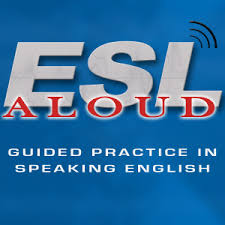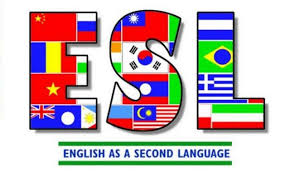Methodologies in Foreign Language Teaching
Grammar-Translation Method (1890s-1930s): It consisted mainly of exhaustive use of dictionaries, explanations of grammatical rules (in English), some sample sentences, and exercise drills to practice the new structures. Little opportunity for real second-language acquisition existed then.
Cognitive Approach (1940s-1950s): This approach introduced the four principle language skills for the first time: listening, speaking, reading, and writing. Oral communicative competence became the focus. Comprehensible auditory input became important and speaking in the target language began to occur.
 Audio-Lingual Method (1950s-1960s): With the advent and popularity of audio tapes, this approach ushered in the first recordings wherein the language learner could actually hear and mimic native speakers on reel-to-reel audio tapes, often used with earphones in a language lab setting. Lessons often began with a sample dialogue to be memorized.
Audio-Lingual Method (1950s-1960s): With the advent and popularity of audio tapes, this approach ushered in the first recordings wherein the language learner could actually hear and mimic native speakers on reel-to-reel audio tapes, often used with earphones in a language lab setting. Lessons often began with a sample dialogue to be memorized. The Direct Method (1970s): This method presented discussion in the target language as the major priority. Reference to English equivalents became discouraged. Grammar learning became inductive in nature without overt explanations given the pupil. Teacher/student interaction became fuller, guessing of context or content, completing fill-ins.
The Direct Method (1970s): This method presented discussion in the target language as the major priority. Reference to English equivalents became discouraged. Grammar learning became inductive in nature without overt explanations given the pupil. Teacher/student interaction became fuller, guessing of context or content, completing fill-ins. The Natural/Communicative Approach (1960s-2000s): Originally developed by Tracy Terrell and Stephen Krashen, this acquisition-focused approach sees communicative competence progressing through three stages: (a) aural comprehension, (b) early speech production, and (c) speech activities, all fostering "natural" language acquisition, much as a child would learn his/her native tongue. Following an initial "silent period", comprehension should precede production in speech, as the latter should be allowed to emerge in natural stages or progressions.
 Total Physical Response/TPR (1960s-2000s): This approach, also known as TPR, was founded by James Asher. In this method, both language and body movement are synchronized through action responses and use of the imperative (direct commands). TPR may be used in conjunction with some other methods involving psychoneuro kinetic techniques wherein the teacher gives a host of commands with the students then responding by “acting out” the command: “Stand up”, “Go to the door”, "Sit down", etc.
Total Physical Response/TPR (1960s-2000s): This approach, also known as TPR, was founded by James Asher. In this method, both language and body movement are synchronized through action responses and use of the imperative (direct commands). TPR may be used in conjunction with some other methods involving psychoneuro kinetic techniques wherein the teacher gives a host of commands with the students then responding by “acting out” the command: “Stand up”, “Go to the door”, "Sit down", etc. The Silent Way (1960s-2000s): This is the production before meaning school of thought and practice. A color-coded phonics (sound) chart called a fidel, with both vowel and consonant clusters on it, is projected onto a screen to be used simultaneously with a pointer, thus permitting the pupil to produce orally on a continuous basis in the target language, vía a sequence of phonemes or sound units. Brightly colored Cuisenaire rods, which are also used in Mathematics, are integrated into this method.
 Suggestopedia (1960s-2000s): Classes are small and intensive, with a low-stress focus. Material is presented in an especially melodic and artistic way. By activating the right "creative side" of the brain, a much larger portion of the intellectual potential can be tapped, thus drawing out long-term memory. Background classical or baroque chamber music, oftentimes accompanied with soft lights, pillows or cushions on the floor for relaxation, accentuate active and passive meditations, séances, yoga, breathing exercises leading into the "alpha state", songs for memorization purposes.
Suggestopedia (1960s-2000s): Classes are small and intensive, with a low-stress focus. Material is presented in an especially melodic and artistic way. By activating the right "creative side" of the brain, a much larger portion of the intellectual potential can be tapped, thus drawing out long-term memory. Background classical or baroque chamber music, oftentimes accompanied with soft lights, pillows or cushions on the floor for relaxation, accentuate active and passive meditations, séances, yoga, breathing exercises leading into the "alpha state", songs for memorization purposes. Community Language Learning/CLL: (1960s-2000s): It is designed to ease the learner into gradual independence and self-confidence in the target language. It encourages holistic learning, personal growth, and self-development. Learning a language is not viewed necessarily as an individual accomplishment, but rather as a collective experience.
 Total immersion technique: This generalized technique in foreign language pedagogy "immerses" or "submerges" the student directly and immediately into the target language from the first opening day or hour of class. There are basically two (2) types of total immersion approaches: (a) effective and (b) ineffective. An effective total immersion environment begins in hour one wherein the teacher speaks the foreign language slowly, clearly, and uses easily understandable and comprehensible cognates.
Total immersion technique: This generalized technique in foreign language pedagogy "immerses" or "submerges" the student directly and immediately into the target language from the first opening day or hour of class. There are basically two (2) types of total immersion approaches: (a) effective and (b) ineffective. An effective total immersion environment begins in hour one wherein the teacher speaks the foreign language slowly, clearly, and uses easily understandable and comprehensible cognates. 
